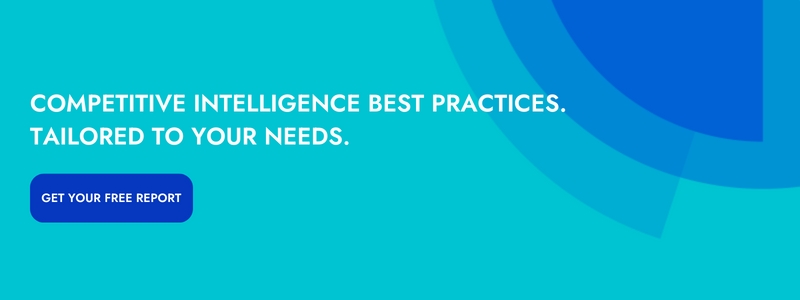As a Customer Success Manager here at Crayon, I have seen over 100 CI programs in action. Nearly all of them have the same success criteria: “Enabling the sales team to win competitive deals and transforming their approach to the competition from reactive to proactive”. At a high level, these are the ideal criteria for a well-run CI program—but what does success look like at a more granular, day-to-day level?
Imagine: Your sellers are not only using your battlecards to help themselves win competitive deals but also completing the necessary fields in Salesforce to tell you WHY they’re winning competitive deals. Elsewhere, your competitive intelligence Slack channel is regularly lighting up with new pieces of intel directly from the field, and your weekly CI newsletter is steadily growing in popularity.
I know this may sound too good to be true, but it’s not—you can achieve these outcomes and then some by multi-threading your CI program. Here at Crayon, we define multi-threading as having a key person from each relevant stakeholder group supporting the CI program in their own unique way.
If you’re ready to get everyone at your company consuming and sharing competitive intelligence, here are my 3 best tips to multi-thread your CI program:
- Increase awareness of your competitive resources
- Pick your champions
- Segment responsibilities by group
Let’s discuss each of these in more detail.
1. Increase awareness of your competitive resources
By definition, you can’t multi-thread your CI program until you’ve built awareness of the program across your company. My recommendation? Competitive intelligence office hours: A recurring 30-45 minute call where you help your stakeholders better understand the resources that are available to them and inspire them to get more involved.
CI office hours are a simple way to spread awareness of different use cases with your current competitive intelligence solution. You may get a new Sales Engineer who didn’t know the battlecards were so impactful for their role or a Product Manager who had no idea they had access to such a robust repository of information on the competition's products.
2. Pick your champions
Having a point person from each key stakeholder group ensures that everyone, regardless of what they do at your company, gets the competitive intel they need. It also ensures that everyone has a resource with whom they’re familiar and comfortable when it comes to competitive intelligence. In the best CI programs, we typically see champions being from Product Marketing, Sales Enablement (or Sales Leadership), and Product. There is no need to limit yourself to just those groups though!
3. Segment responsibilities by group
A well-oiled machine doesn’t have multiple parts taking the same action; each part has a unique role that supports the overall performance of the machine. That’s why it is crucial that each champion has specific responsibilities. Our customers typically segment the responsibilities out like this:
- Product Marketing: Curates/maintains content for the battlecards, and analyzes win/loss analysis using the Crayon Impact integration with Salesforce.
- Sales Enablement: Ensures the battlecards are in the right locations, promotes their usage and solicits feedback on their performance.
- Product: Keeps Sales informed on new features coming out internally, and stays aware of new competitor feature releases that are competitive to your own.
Multi-thread your way to the top
It’s time to bring your competitive intelligence program to the next level, starting with these 3 strategies. This is going to benefit everyone from Sales to C-Level Executives, and everyone in between. Don’t be surprised when your company is the industry leader, and the competition is trailing miles behind you!

Related Blog Posts
Popular Posts
-
 How to Create a Competitive Matrix (Step-by-Step Guide With Examples + Free Templates)
How to Create a Competitive Matrix (Step-by-Step Guide With Examples + Free Templates)
-
 The 8 Free Market Research Tools and Resources You Need to Know
The 8 Free Market Research Tools and Resources You Need to Know
-
 Sales Battlecards 101: How to Help Your Sellers Leave the Competition In the Dust
Sales Battlecards 101: How to Help Your Sellers Leave the Competition In the Dust
-
 6 Competitive Advantage Examples From the Real World
6 Competitive Advantage Examples From the Real World
-
 How to Measure Product Launch Success: 12 KPIs You Should Be Tracking
How to Measure Product Launch Success: 12 KPIs You Should Be Tracking




